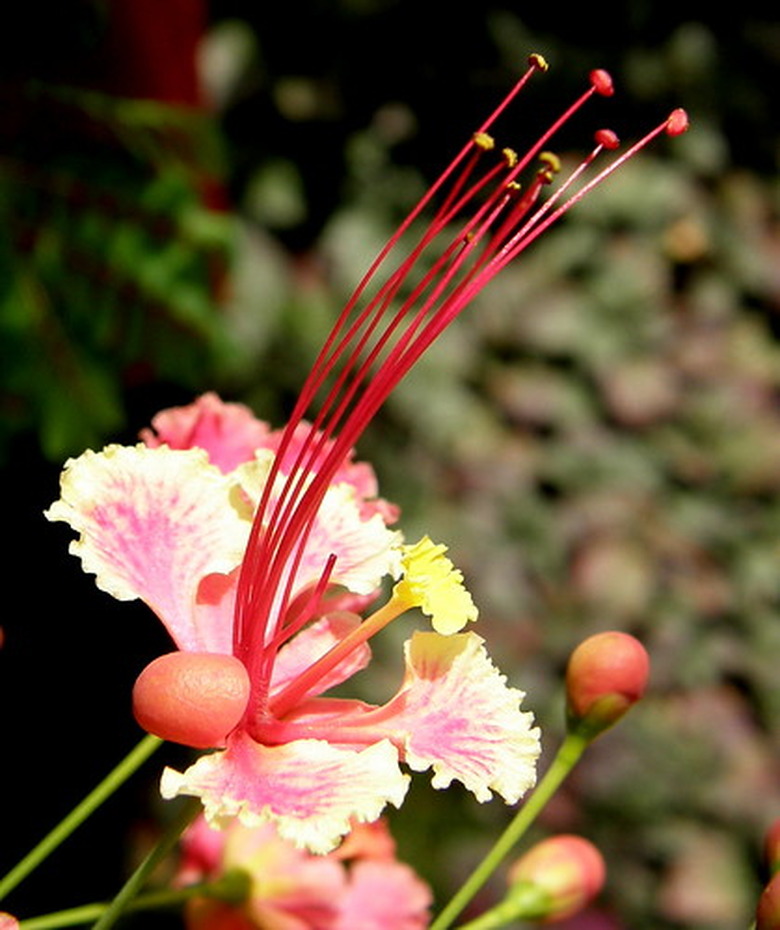Honeysuckle Plants & Dogs
Owning dogs while maintaining a nice garden can seem impossible at times. Some dogs feel the need to eat every plant within their sight, tearing a wide streak through the flora you have worked so hard to nurture. The honeysuckle plant is no exception to this. With its sticky sweet nectar and enticing aroma, the honeysuckle seems to attract dogs. There is compelling evidence to suggest that dogs should not be allowed to chow down on the honeysuckle plant for any reason.
Identification
Honeysuckles present themselves as shrubs or vines. They are grown for their bell shaped, sweet-smelling blossoms. There are approximately 180 species of honeysuckles in the world spread throughout Asia, Europe and North America. The honeysuckle plants produce berries of red, blue or black, which are, with the exception of berries produced by Lonicera caerulea, poisonous. They can grow wild as well as in cultivation and are native to the Northern hemisphere.
- Owning dogs while maintaining a nice garden can seem impossible at times.
- There is compelling evidence to suggest that dogs should not be allowed to chow down on the honeysuckle plant for any reason.
Warning
All parts of the honeysuckle plant are toxic to dogs. The vine and flowers contain saponic glycosides and cyanogenic glycosides. Saponic glycosides create a froth when mixed with bodily fluids, creating a build-up of gases within the dog's stomach. Saponic glycosides can also create a frothing of blood, leading to the rupture or fracture of red blood cells, creating a lack of oxygen throughout the body.
When met with stomach acids, cyanogenic glycosides turn into cyanide, a powerful poison. The berries of honeysuckles contain carotenoids. While not inherently dangerous and often used as nutritional supplements, dogs are unable to process too many carotenoids.
- All parts of the honeysuckle plant are toxic to dogs.
- Saponic glycosides create a froth when mixed with bodily fluids, creating a build-up of gases within the dog's stomach.
Effects
Common effects associated with canine ingestion of honeysuckle plants include enteric distress, vomiting, diarrhea, stomach rupture, blood cell rupture, high blood pressure, loss of appetite, loss of thirst, ataxia, confusion, unconsciousness, depression, irregular heartbeat, coma, seizure and death.
Prevention
Avoid planting honeysuckles as an ornamental plant in areas that your dog frequents. If you are unable to do so, supervise your dog when he is around the plants and ensure no part of the honeysuckle is ingested. When planning your garden, consider viable alternatives to the honeysuckle plant based upon your needs–a non-toxic flowering plant such as Calycanthus spp. may be a good choice.
Solution
Dogs who have ingested honeysuckle plants should be taken to the veterinarian for emergency treatment. Testing will be done to determine the state of the dog and the steps that will be taken to administer life saving efforts. If you are unable to seek emergency veterinary medical care, speak to an operator at an animal poison control hotline for suggestions on how to deal with ingestion of honeysuckle.
- Common effects associated with canine ingestion of honeysuckle plants include enteric distress, vomiting, diarrhea, stomach rupture, blood cell rupture, high blood pressure, loss of appetite, loss of thirst, ataxia, confusion, unconsciousness, depression, irregular heartbeat, coma, seizure and death.
- If you are unable to do so, supervise your dog when he is around the plants and ensure no part of the honeysuckle is ingested.
References
- "Handbook of Poisoning in Dogs and Cats"; Alexander Campbell, Michael Chapman; 2000
- "Clinical Veterinary Advisor: Dogs and Cats"; Etienne Cote DVM; 2006
- "Taylor's Encyclopedia of Garden Plants: The Most Authoritative Guide to the Best Flowers, Trees, and Shrubs for North American Gardens"; Frances Tenenbaum; 2003
